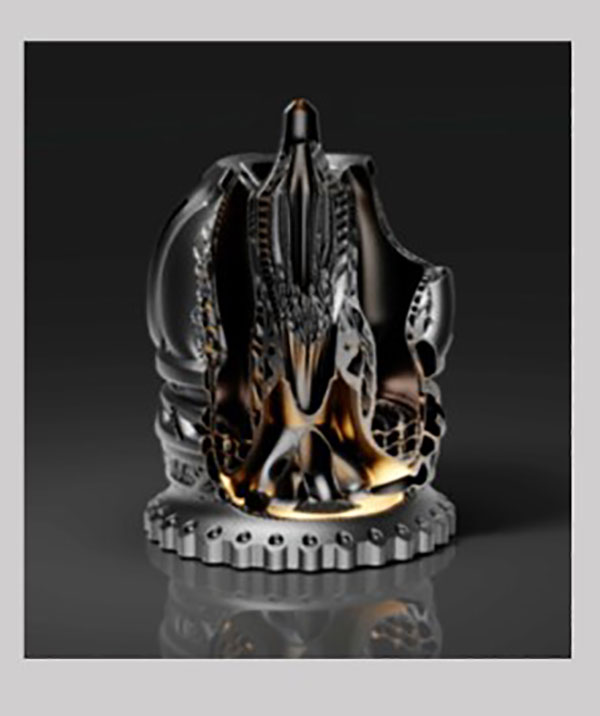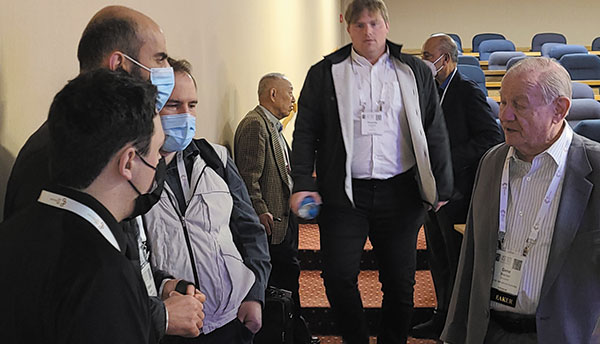Features Articles

Limiting PCB moisture absorption is the full responsibility of the supplier. How to pack boards right.
PCB suppliers who use good packaging methods are keeping their products safe from physical damage incurred during transit from the manufacturing facility to customers’ warehouses. Equally important, these packaging practices help ensure shelf-life expectancy by preventing moisture absorption.
To protect their orders, PCB buyers should require suppliers strictly follow corporate shipping specifications. Nothing is more frustrating than waiting for quality product to be built, only to have it damaged because of poor packaging practices. It’s just as frustrating when boards become useless while sitting on the shelf.
PCBs can be very heavy. Their sharp corners sometimes wreak havoc on the corrugated cardboard boxes in which they are shipped. A good freight spec should state boards are to be vacuum-packed with a bubble wrap base, with no more than 25 boards to a stack. When a board is oversized or heavier than normal, 10 to 15 pieces is the best option. Whatever number is used, the packaging should be consistent in count for a particular shipment.
Extra care should be taken for flexible or very thin, rigid PCBs less than 0.028" thick. They should be packaged with stiffening material on the top and bottom of the bundle to help prevent warping.
A humidity indication card (HIC) and desiccant are to be placed within the package as well. The HIC should be placed inside on top of the PCBs for easy review. The desiccant should be placed along the side or edge of the bundle, so it doesn’t contribute to bending or warping caused by the stress of the vacuum packaging.
Each PCB bundle should have a sticker affixed detailing the part number, date code and number of pieces per bundle. More than one date code of the same product may be shipped together if they are segregated and marked as such.
X’d-out panels, if allowed by your PCB fabrication specifications, should be packaged separately and clearly marked.
The individual packages of PCBs should be placed tightly in a box, with Styrofoam or other shock- absorbing material placed between the packages and the wall of the shipping container. The PCB corners should be protected, as they can be easily dinged or dented while in transit.
The weight of each box should not exceed 30 lb. Boxes may have exterior strapping applied when the PCBs are oversized or heavier than normal.
Each box should have a sticker on either end identifying its contents, including the part number, purchase order number, date code and number of pieces within the box.
Each part number shipped should come with a packing slip and “proof of quality” documentation, including (but not be limited to):
- The certificate of compliance
- A first article or dimensional report
- A microsection report to include a solderability test with a cross-section
- An electrical test report
- An ionic contamination report
- A TDR report (controlled impedance, when applicable)
- Any material certifications
- Any other documentation required by the purchase order.
When the product is shipped, the supplier should notify the customer’s purchasing, receiving and accounting departments of shipment method and tracking number. The commercial invoice and electronic copies of the quality paperwork should be included in case such documentation for the shipment is lost in transit.
As crucial as proper PCB packaging is, the storage of the boards once they reach the customer is just as vital. Other than opening one of the packages to verify the PCBs meet the criteria of the print and the documentation received, the best bet is to leave the boards in their original packaging.
A bare board begins to absorb moisture immediately upon leaving the factory. The amount of moisture absorbed depends on a variety of factors, including:
- Base material used in manufacturing
- Manufacturing environment
- Packaging method
- Shipping temperatures (from the cold bellies of aircraft or the humid transit of a sea shipment to hot delivery trucks)
- Customer storage and inventory procedures.
Vacuum sealing and the use of desiccant only delay or lessen moisture absorption. They do not prevent it.
The longer a PCB is stored on a shelf, the greater the chance it will absorb moisture, which can manifest in the assembly operation as delamination. Delamination is caused either by moisture or manufacturing defects. If a problem PCB is determined to be structurally sound, the cause most likely is moisture-related. A bake-out process before any additional assembly can remove most of the moisture, if not all of it. This permits the board to be assembled without issue.
IPC-1602, Standard for Printed Board Handling and Storage, provides suggestions for proper handling, packaging and storage of PCBs. It puts the full responsibility for PCB moisture content on the supplier, even after the finished product has left the manufacturing facility.
The way PCB suppliers package their products indicates their commitment to quality and reliability. It is the final step in the manufacturing process, and PCB buyers have a responsibility to ensure it is done right.
has more than 25 years’ experience selling PCBs directly for various fabricators and as founder of a leading distributor. He is cofounder of Better Board Buying (boardbuying.com); greg@directpcb.com.

Fabricators and designers must communicate about new technology to verify its viability.
More often than not over the past couple of decades, new technologies, processes and options we fabricators have been asked, begged or threatened to add to our repertoire of offerings were ones that could be best considered disruptive. What’s disruptive to a manufacturer may seem benign to the casual eye, as often the technology – or process – that is most disruptive is a simple one.
Indeed, sometimes that technology is nothing more than the rebirth of an older, tried-and-true, albeit significantly tweaked, process. REACH, and the prior RoHS, caused much disruption, and yet most of the plating chemistries and surface finishes in use today are essentially highly refined formulas of older plating technologies such as ENIG, silver and tin.
Old or new, disruptive technologies tend to be challenges for several reasons. First is understanding the technology and how to process it so it works as intended. Second is determining what equipment is needed to cost-effectively and robustly apply the new technology. Finally, finding enough customers to consistently order product that uses the technology, so everyone remembers what it is and how to process it!
Truly new paradigm-shifting technologies hit the scene as “must haves” so a product can function. While disruptive to manufacturers, in some ways the more off-the-wall a technology seems, the easier it is to decide whether to embrace it or wait to see if it sinks under the weight of its own hype. These disruptive technologies more typically challenge everyone to understand not only how to apply them, but how to measure success or failure so yields and costs can be determined.
In all cases, what makes disruptive technologies so unruly boils down to two issues: First is the learning curve and capital investment needed to provide the technology, and second is gaining consensus among customers that the technology is a better alternative to more traditional technologies, and they will purchase enough to warrant the human and capital investment. Probably most frustrating for fabricators is when a buyer provides no apparent reason other than “because” for specifying a new technology. The fabricator’s goal is to supply quality product they understand and can safely and consistently produce, not (inadvertently) become a customer’s R&D center, with the concurrent risks and costs.
Every new technology has at least two sides. At a recent industry gathering, a supplier mentioned a current disruptive technology we had difficulty working our way through was only one of a slew of new “enabling” technologies available to the industry. Enabling? Not to me. That is when the communication gap between design application and manufacturing competence became evident. As this conversation continued, I heard a different spin as to why a particular new technology was being specified. Understanding the benefits from the end-product perspective began to make sense and explained why this customer would have specified it, as well as why its use may become widespread in the future. The tutorial was strictly from a value-add design perspective, and it was compelling. When asked if the design community knew of the fabrication challenges the new technology caused that impacted yield and lead times, in addition to cost, the answer was honest: “Probably not.”
What’s enabling to one party can be disruptive to another. Fabricators often do not understand the nuances of pushing design to meet challenging performance objectives but do fully understand robust, time-proven manufacturing techniques. Equally, when a designer chooses to move toward a new technology, they may be excited by the functionality it offers but most likely is unaware manufacturing the board could lead to lower yield, longer lead times and ultimately higher costs.
The real issue is understanding the risks involved with embracing – or ignoring – new technology. The risks include, “Will it work, or will it only work if executed flawlessly? Will the new technology pass the test of time? Most important, will widespread use of the technology lead to cost-effective processes or equipment to ensure consistency from one application to another and from one supplier to another?”
As a fabricator, it is more important now than ever to be in touch with customers’ designers to understand what they are attempting to accomplish. Equally for designers, it is essential they are in contact with all their PCB suppliers, especially the behind-the-scenes process gurus, so everyone understands the manufacturability of new technology in the real world of the shop floor.
This gets back to the need for suppliers knowing their customer and customers knowing their suppliers – and not just at the buyer/sales rep level but at the designer/manufacturing engineer level. Knowing the intended end-result a new technology enables, as well as how disruptive that technology may be when introduced to manufacturing, the product is the best way for customers and suppliers, working together, to accomplish a cost-effective design. Too often this communication is wrongly assumed to occur. As much as frequent two-way communication should be happening when all is moving along with traditional technologies, it is critical the communication takes place when a new approach is contemplated that may be enabling for one but not necessarily for others.
The difference as to whether a technology is enabling or disruptive is determined only by the degree in which customer and supplier decide to work together. As our industry finds ways to tweak older, reliable technologies or develop paradigm-changing ones, understanding the enabling benefits and the disruptive nature will make the journey mutually rewarding.
is president and CEO of IMI Inc.; pbigelow@imipcb.com. His column appears monthly.

The current difficulties call for a more strategic approach to arranging our global supply chains.
The supply chain chaos in the aftermath of the pandemic has highlighted the risks associated with globalization. As a phenomenon, globalization has served many of us well. Its ideological opponents, however, see today’s situation as justification for its demise. There is no denying current events have highlighted shortcomings. We would be foolish not to learn and adapt.
I’ve addressed the subject of onshoring as a potential antidote to globalization many times in the past. Arguably, now, the idea makes more sense than ever. On the face of it, shorter supply chains promise some protection against the unpredictability of today’s world. Hot on the heels of the pandemic, we now have the Ukraine crisis, and there is the fallout from Brexit, which has made for difficult and time-consuming trade between the region’s most influential economies. One major obstacle to the return of onshoring is essential indigenous-supporting industries have been largely swept away as activities have migrated offshore, taking expertise and investment with them. The conditions that caused and drove the offshoring remain in place, perhaps masked by current logistical difficulties. Accessing the data needed to move manufacturing activities from an established location is another barrier to reshoring.

Just like housing, a little extra size can cost a lot more.
Printed circuit boards in panel or array format increase the efficiency of the assembly operation, especially in volume applications. Takt time is greatly reduced, and handling of product is easier. However, rising material prices are cutting into that advantage because more material is required to produce those arrays.
PCB costs are based on the amount of raw material required to make a particular board. The metal finish, like ENIG or silver, plays a part in pricing, but it is the amount of fiberglass and copper needed that really determines the final cost.
The quoted price for most boards in panel or array format is based on a fabricator's desired panel price for a particular technology or quantity, divided by the number of arrays (or pieces) that fit on a standard 18 x 24" manufacturing panel. The more arrays or pieces that fit on the panel, the lower the cost.
Whether that price is dictated by the number of boards (arrays) that can fit on the standard manufacturing panel, or by the total square inches of the finished array, a quarter or half-inch too long in one direction may mean a double-digit price difference.
 The PCB East keynoter gives a roundup of innovative technologies to come out of the pandemic.
The PCB East keynoter gives a roundup of innovative technologies to come out of the pandemic.
We have gone where no mask has gone before! The Printed Circuit Engineering Association (PCEA) held its first regional conference and exhibition in Marlborough, MA, in April.
A resurrected PCB East drew attendees from as far as the West Coast and Florida. There is nothing like in-person contact. The social aspect of networking has been missing for far too long. The enthusiasm of the attendees bodes well for future face-to-face regional gatherings.
It was great to see so many old friends in the real world, while meeting new young engineers and entrepreneurs such as Yitzi Ehrenberg and David Kanarfogel of Conformant, who have developed a new additive circuit process based on an innovative CVD system.
IPC and retired industry legend Dr. Laura Turbini joined many notable attendees, including Dr. Hayao Nakahara, Anaya Vardya, John Vaughan, Chrys Shea and Peter Bigelow, president of the SMTA Boston Chapter.
The many design and engineering programs conducted during the three-day meeting and exhibition by such experts as Susy Webb, Rick Hartley and Steph Chavez brought attendees up to date.
In step with the expanding revolution of 3-D printing offering the ability to create previously unimaginable structures by the precision dispensing of a variety of conducting and insulating materials, Dr. Jaim Nulman of the AME Academy stirred our imaginations with a two-hour introduction to 3-D additive manufactured electronics.
During my keynote “From Possibility to Reality,” I discussed new and emerging technologies from Israel, Germany, the US and Japan. The image of a rocket spike created by Hyperganics’ algorithmic engineering platform that used AI to design and print the complex part amazed a full lecture hall. The detailed combustion chambers, which can only be created by software, ensure it doesn’t overheat.
The theme was Covid Class Creations: products and processes developed, improved, modified and introduced during the pandemic. A number of new products under advanced development or on the verge of commercialization not yet seen in the marketplace were presented.

This aerospike rocket engine was engineered in Hyperganic Core using advanced software algorithms and has never seen a single piece of manual CAD. It’s likely the most complex additive manufactured part ever produced; it broke all conventional workflows. The part could not previously be designed, let alone built. It is said to be about 20% more efficient than previous bell-shaped parts.
Luminovo’s rapidly growing software suite for PCB design and manufacture, not yet available in the US, drew a lot of attention. Among its features is one that can calculate and predict design violations. It also calculates supply chain risk assessments.
Averatek’s A-SAP process (semi-subtractive process, or SSP, by some) allows the design and fabrication of 25µm lines and spaces, illustrated by a part produced at American Standard Circuits, as was Rogers’ new resin for 3-D additive manufacturing (by spray) that resulted in printable and plateable parts.
Atotech’s new electroless – yes, I said electroless, not immersion – tin process was intriguing! The process did not dissolve copper from the base plated, is not dependent on its position in the periodic table in reference to the metal(s) – usually copper – and did not stop depositing when the base was sealed. Therefore, no dissolved copper contaminates the solution. The company also introduced a new oxide replacement for MLB manufacture, which left a smoother surface for HF and VHF needs.
As we contemplate new materials for 5G and 6G applications, Isola introduced hybrid laminates, combining PPE with outer layers on FR-4, as well as other combinations. The company also provided data on its new green materials.
Nano Dimension provided information on the progress of its activities to make 3-D ink-jetted printed circuit structures containing passive components, 75µm lines and spaces, and 45° pad-less interconnects between levels with its most recent DragonFly IV system.
PulseForge’s use of photonics to replace IR or laser for soldering permits soldering to curved or flexible surfaces, soldering to PET or paper (e.g., LEDs to flexible substrates), reel-to-reel and soldering batteries to substrates for single-use medical devices. The use of photonics can be used to cure protective coatings or sinter metallic pastes – all in seconds with 75% less power than IR. The company illustrated its activities to develop cycles for BGA assembly. The photonic soldering process reportedly provides fewer voids in SAC alloy joints than conventional thermal processes.

The author (right) greets attendees following his keynote at PCB East in April.
IO-Tech, winner of recent innovation awards at Productronica and Lopec, introduced its unique patented laser system for application of precisely and rapidly depositing type 6 solder spots with resolution of 100µm in diameter and 25µm (or finer) pitch – faster than dispensing 2,000 droplets. I predict fabricators will be challenged to make substrates that take full advantage of this system’s capabilities! Die bonding is another potential application for this system, as deposits are extremely flat. (Roughness is <5µm.) It can print on components for multiple chip stack applications. And, for this application, the system is said to be faster than dispensing 10,000 droplets.
This is only the beginning of a new age in the design and manufacture of electronic packages. It’s difficult to see how the chip shortage problem will be resolved in the near future, as the world’s supply chains are experiencing new disruptions due to the conflicts in Europe. It is also too soon to know how or if active components will be part of the future of additively built constructions.
In the interim, we’ll continue to see more consolidation. There will be more vertical integration. Partnering and cooperation, perhaps even system or facility sharing, will increase.
Even when supply chain issues are resolved, we still need to build new infrastructures for the new designs promulgated by so many new innovations. Then we will need new standards and new tests to determine quality.
Stay tuned! Better yet, join the parade and march forward with your contributions to the developing world of electronic design, manufacture and packaging.
is a business and technical consultant dba Weiner International Associates, serving the specialty chemical and electronics industries. His clients have included several Fortune 100 companies. His executive experience includes president of New England Laminates; vice president of sales and marketing of Dynachem, and director at Wong’s Kong King International; gene@weiner-intl.com.

Firstronic and Lacroix took a long-term approach to joining forces, eliminating the usual learning curve.
As a 40-year veteran of the electronics manufacturing services industry, I’ve seen my share of EMS mergers and acquisitions from both sides of the equation. The basic EMS industry business model adds complexity to that equation not found in most industries because EMS companies are an extension of their customers’ manufacturing operations or, in some cases, their entire manufacturing operation. If a larger conglomerate acquires the company that manufactures your dish soap, you won’t notice unless the product’s effectiveness or branding changes dramatically. If your EMS provider is acquired, it’s obvious on day one.
In many transactions, the only consideration of impact to an EMS company’s customer base is visits to key customers during the due diligence phase to enable the acquiring entity to assess whether the business levels they anticipate are likely to continue in the new entity. The alignment of EMS brand/differentiating processes and facility redundancy are often minor considerations.
Press Releases
- K&F Electronics Boosts Production with New Hanwha SMT Line
- Luminovo Appoints SaaS Veteran Clifton Lobo as VP Global Sales to Accelerate International Growth
- Johan Stormlund Joins Inspectis AB as Marketing and Sales Manager, Industrial Applications
- Altus Brings Heller’s Revolutionary Short-Cycle Vacuum Reflow Oven to the UK and Ireland


